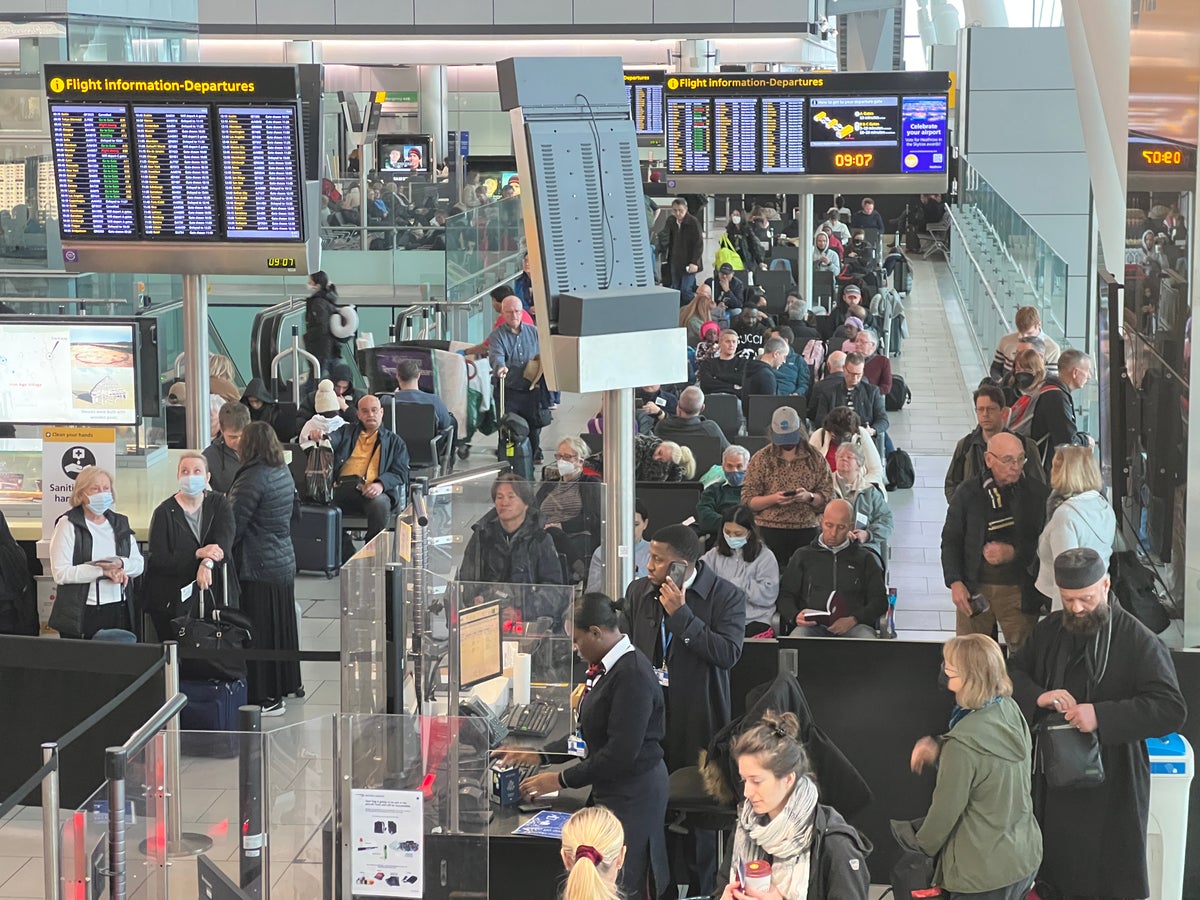
At last, league tables in which UK airports are moving up. According to just-released data from the aviation schedule analyst OAG, Heathrow and Gatwick are improving relative to the global competition (compared to figures in 2019).
The metric being used? The number of seats departing on flights in August. A more valuable measure, you could contend, would be the actual number of passengers. But that data will not be available for many weeks, and this very busy summer there is a strong correlation between capacity and numbers carried. So available seats is a valid way to compare the world’s mega-hubs.
Top of the table is the airport serving a city that ranks only 38th in the US in population terms: Atlanta. The Georgia state capital may be home to only half a million people, but such is its hub status that it leads the world with 5.42 million seats.
Moving up to second place, and catching up on Atlanta, is Dubai. Unlike the US city, it has zero domestic flights, but international connections provide it with 4.96 million seats.
Tokyo Haneda (4.68 million) takes third place, and Dallas (4.4 million) is fourth.
Next comes London Heathrow in fifth place, rising from seventh thanks to declines at Los Angeles and Chicago O’Hare. But watch out for Istanbul, whose new airport is a rising star. Both airports are rounded to 4.37 million – with Heathrow just 3,535 seats ahead.
Just one more flight a day would take rapidly expanding Istanbul ahead. And once Chinese aviation is back to pre-pandemic levels, the main airports in Beijing and Shanghai are likely to be formidable competitors.
Strip out domestic flights – which make up the vast majority of seats for Atlanta and a fair few for Tokyo and Istanbul – and the picture becomes very different.
Dubai’s 4.96 million seats make it unapproachably distant at the top of the “international only” league. Heathrow loses about 5 per cent of its seat count once domestics are discounted, and reports passenger numbers still down on pre-pandemic levels. But it still makes a commanding second place with 4.13 million.
Its four main European challengers – Amsterdam, Paris CDG, Istanbul and Frankfurt – are next, all bunched together around the 3.25 million mark. The French may be miffed to be overtaken by the Dutch (albeit by a tiny margin), but plans to cut flights at the Netherlands hub should see Paris reclaim the continental Europe lead.
Singapore (3.2 million) makes seventh place, just ahead of Seoul’s Incheon airport (3.15 million).
You probably won’t be surprised to see Doha taking ninth place with 2.64 million passengers; the Qatar Airways hub is still expanding relentlessly and has risen from the 15th place it occupied in 2019.
But you may be amazed (I was) to learn which airport took 10th place: London Gatwick, up from 12th four years ago, with 2.34 million seats this month.
Go back to April 2020 and the Sussex airport had so few passengers that it closed the North Terminal completely and reduced its hours of operation to just 2pm-8pm daily. As an airport, you know you’re in trouble when your main passenger route involves a commuter jet from Minsk.
Gatwick was crushed by Covid but has clambered back impressively from the abyss.
Looking at the European league table, and bringing domestic passengers back into the count, Heathrow is in its familiar first place. Whether it stays there, with Istanbul biting at its heels, depends on whether capacity can recover to 2019 levels.
The southern European trio of Madrid, Barcelona and Rome take sixth, seventh and eighth places respectively. Gatwick is ninth, up one place from 2019. Joining the top 10: Antalya in southern Turkey. I count at least 20 different Russian airports, from Volgograd to Novosibirsk, on the departure screens. International sanctions mean that no airport in Russia makes the top 10.
When Putin’s lousy war is over, the picture will change once again. But Russian aviation will have its work cut out to return to prominence on the world stage.







